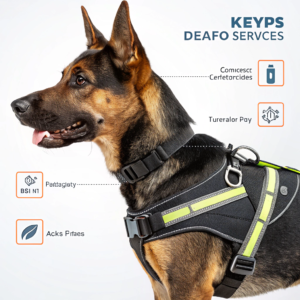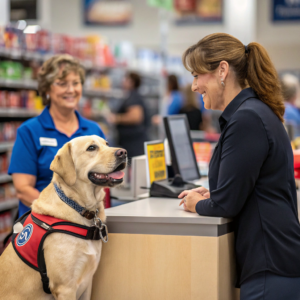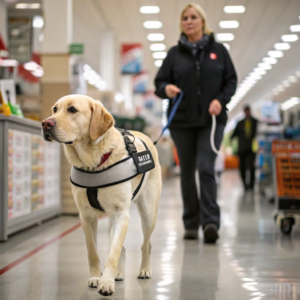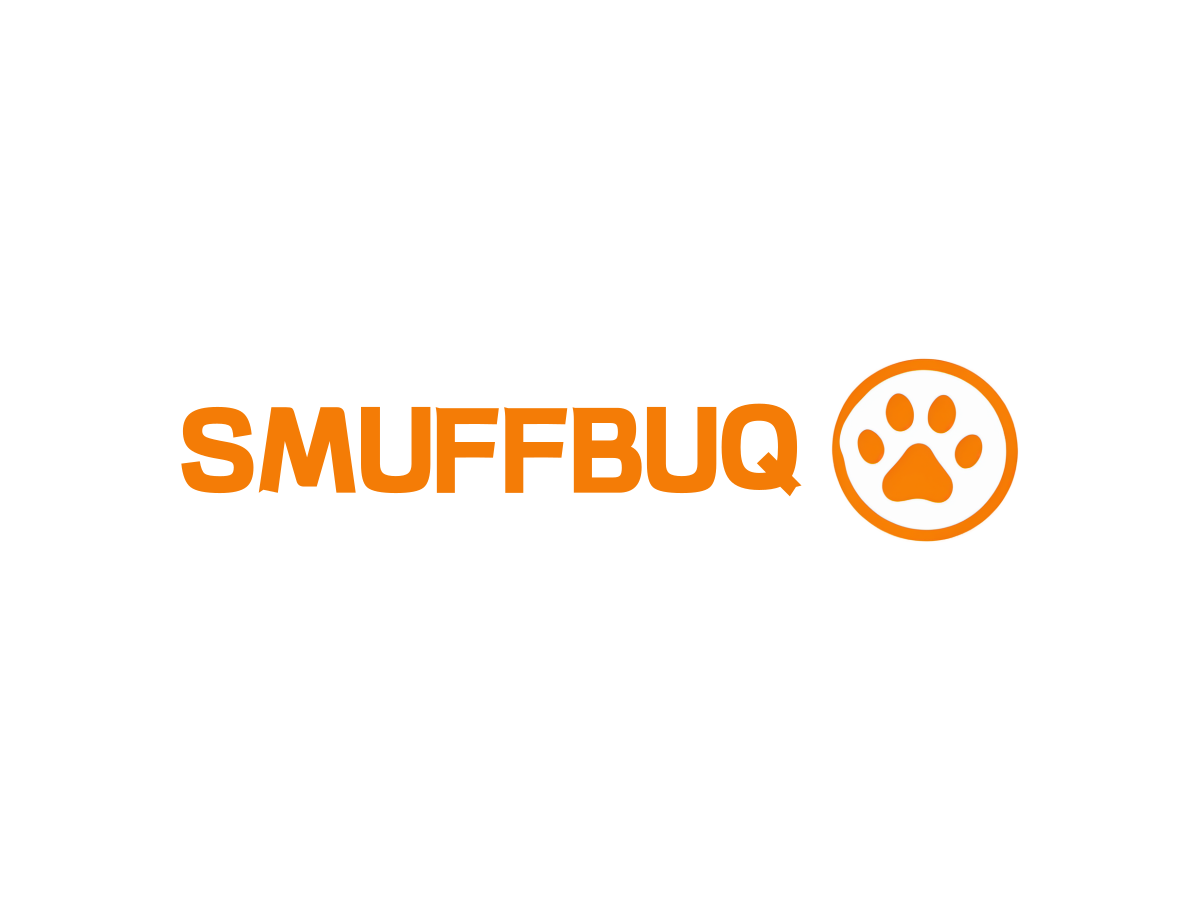What is a service dog harness?
Navigating public spaces with a service dog can be challenging. Many handlers face skepticism, intrusive questions, and even access denials, despite having a legitimate service animal trained to mitigate their disability.
**A service dog harness is specialized equipment worn by trained service animals that typically includes identifying patches, a handle for stability orA service dog harness1 is specialized equipment worn by trained service animals that typically includes identifying patches, a handle for stability or mobility assistance

In my years working with service dog teams, I’ve seen firsthand how the right harness can make a tremendous difference not only for the dog’s comfort and ability to work but also for the handler’s experience in public. Let me share what I’ve learned about these specialized pieces of equipment.
What makes a service dog harness special?
Standard pet harnesses rarely meet the needs of working service dogs and their handlers. This mismatch can impact the dog’s performance and create unnecessary complications during critical moments when the handler needs assistance.
Service dog harnesses are distinguished by specific design elements including a sturdy mobility handle, clear identification patches, task-specific features (like medical alert pouches or brace points), high-visibility markings, and and premium construction for extended daily wear1 during assistance work.

Through my experience with service dog teams, I’ve come to appreciate the thoughtful engineering that goes into these specialized harnesses. Let’s explore the critical features that separate them from standard pet equipment.
Functional Design Elements
Service dog harnesses are purpose-built with several key functional elements:
-
Ergonomic Handles
Unlike standard harnesses, service dog equipment often includes robust, anatomically designed handles that allow handlers to:
- Maintain balance while walking
- Receive physical support when standing from seated positions
- Brace against the dog during mobility challenges
- Guide the dog with precise control in crowded environments
These handles are positioned over the dog’s These handles are positioned over the dog’s center of gravity and designed to distribute weight1 properly across the dog’s frame, avoiding pressure on the spine or joints
-
Task-Specific Adaptations
Service dogs perform a wide range of tasks depending on their handler’s disability. Their harnesses often include specialized features such as:
Disability Type Harness Feature Purpose Visual impairment Rigid guide handle Provides feedback about dog’s movements Mobility impairment Counter-balance support Helps with stability while walking Medical alert Medication pouch Carries emergency medications PTSD support Pressure therapy panels Creates calming pressure during anxiety Autism assistance Tethering system Prevents wandering while maintaining connection The versatility of these adaptations ensures the harness meets the specific needs of each unique handler-dog team.
-
Multiple Attachment Points
Service dog harnesses typically offer various leash attachment options:
- Back attachment for casual walking
- Front attachment for gentle guidance
- Side attachments for precise positioning
- Dual attachments for maximum control in complex environments
This versatility allows handlers to adapt to different situations they encounter throughout their day.
Identification and Communication Features
Beyond functional elements, service dog harnesses serve as an important communication tool:
-
Clear Identification
Most service dog harnesses include:
- "Service Dog" patches or embroidery
- "Do Not Pet" or "Working Dog" messaging
- Sometimes specific information about the handler’s needs
- Space for additional patches explaining the dog’s role
These identification elements help reduce public interference and establish the dog’s working status, though they aren’t legally required for access rights.
-
High-Visibility Elements
Safety features are common in service dog harnesses:
- Reflective stitching or piping for nighttime visibility
- Bright colors or patterns for daytime recognition
- Florescent elements for low-light conditions
These visibility enhancements protect both the dog and handler, particularly important for These visibility enhancements1 protect both the dog and handler, particularly important for handlers with certain disabilities
Superior Construction and Materials
Service dogs typically work 8-12 hours daily, requiring equipment that can withstand continuous use:
- Heavy-duty nylon or ballistic materials that resist wear
- Reinforced stitching at stress points
- Padded contact points to prevent rubbing during extended wear
- Machine-washable fabrics that maintain integrity
- Water-resistant or waterproof options for working in various conditions
- Breathable padding to maintain dog comfort in different temperatures
I’ve noticed that high-quality service dog harnesses often use materials and construction techniques more similar to tactical or military gear than to standard pet products, reflecting their serious working purpose.
Customization and Adjustability
Every service dog team has unique needs based on:
- The handler’s specific disability
- The dog’s size, shape and breed
- The tasks the dog performs
- The environments where they work
The best service dog harnesses offer extensive adjustability or custom sizing to ensure proper fit, which is critical for both the dog’s comfort and the effectiveness of task performance.
How do people prove they have a service dog?
The question of "proof" creates significant confusion and frustration for legitimate service dog handlers. Many face inappropriate demands for documentation or "certification" that isn’t actually required by law.
Under the Americans with Disabilities Act (ADA), service dog handlers aren’t required to carry special identification, certification, or documentation. Businesses may only ask two questions: (1) Is the dog a service animal required because of a disability? and (2) What work or task has the dog been trained to perform?

Through my work with service dog teams, I’ve seen the challenges handlers face when navigating public spaces. Understanding theThrough my work with service dog teams1, I’ve seen the challenges handlers face when navigating public spaces. Understanding the legal framework is essential for both handlers and the general public
Legal Framework for Service Dog Access
The ADA clearly establishes the rights of service dog handlers:
-
Minimal Verification Requirements
Under federal law:
- No documentation can be required
- No special identification is necessary
- No certification programs are officially recognized
- No special harnesses or vests are mandatory
- Verbal confirmation of the dog’s status is sufficient
This minimal verification system is designed to protect people with disabilities from additional burdens while accessing public spaces.
-
The Two Legal Questions
When a service dog’s status isn’t obvious, staff may ask only:
- "Is this a service dog required because of a disability?"
- "What work or task has the dog been trained to perform?"
Staff cannot:
- Ask about the person’s disability
- Request medical documentation
- Require a demonstration of the dog’s tasks
- Ask for identification cards or certification
-
State and Local Variations
While federal ADA regulations provide baseline protections, some states have enacted additional laws that may:
- Create state-specific service dog registries (optional)
- Establish more specific training standards
- Provide enhanced penalties for service dog misrepresentation
- Offer special identification cards (voluntary)
These state provisions cannot restrict access beyond federal law but may offer additional protections.
Common Proof-Related Challenges
Despite clear federal regulations, service dog handlers regularly face incorrect demands for proof:
| Common Demand | Legal Reality | Practical Response |
|---|---|---|
| "Show me your service dog certification" | No certification is required by law | "Under the ADA, no certification is required for service animals." |
| "Your dog needs to wear a service vest" | No specific gear is required | "The ADA doesn’t require service animals to wear any specific equipment." |
| "I need a doctor’s note" | Medical documentation cannot be required | "Federal law prohibits requiring medical documentation for service dog access." |
| "We need proof of the dog’s training" | No training documentation can be required | "I’ve confirmed this is a service animal trained for my disability." |
I’ve coached many handlers through these situations, emphasizing calm education over confrontation when facing these inappropriate requests.
Voluntary Identification Options
While not legally required, many handlers choose to carry or use:
-
Information Cards
- ADA service dog regulations summary cards
- Cards explaining the dog’s tasks (without disclosing medical details)
- Business cards with relevant information to hand to inquiring staff
-
Training Certifications
- Graduation certificates from training programs (though not legally necessary)
- Training logs documenting the dog’s skill acquisition
- Documentation of Public Access Tests completed
-
Digital Resources
- Smartphone apps with relevant service dog laws
- Digital copies of training documentation
- Links to official ADA service animal guidelines
Many handlers find that carrying such voluntary information helps navigate difficult situations, even though they cannot legally be required to produce it.
Identifying Gear as a Communication Tool
While not legally required, many handlers find that clear service dog identification helps:
- Reduce unwanted interactions from the public
- Communicate the dog’s working status
- Facilitate smoother access to public places
- Decrease questioning and confrontations
This explains why most handlers choose to use identifying harnesses, vests, or patches even though they’re not mandated by law.
Do service dogs need a special harness?
Many people assume service dogs must wear special harnesses or vests by law. This misconception affects both handlers and businesses, sometimes leading to unnecessary access challenges.
**Service dogs are not legally required to wear a special harness or any Service dogs1 are not legally required to wear a special harness or any identifying gear.

Throughout my years supporting service dog teams, I’ve encountered many misconceptions about equipment requirements. Let’s clarify what’s actually needed versus what’s simply helpful or conventional.
Legal Requirements for Service Dog Equipment
The legal standpoint is straightforward:
-
Federal ADA Regulations
- No requirement for special equipment or identification
- Service dogs may work in a standard collar and leash
- Businesses cannot require special harnesses or identifying gear
- The dog’s behavior and training are what legally matter, not appearance
-
Exception for Control Equipment
- The only equipment-related requirement is that service dogs must be under control
- This typically means a leash, harness, or tether unless the handler’s disability prevents using one
- In cases where equipment can’t be used, voice or signal control is acceptable
-
State Variations
- Some states have created voluntary identification programs
- These programs cannot be mandatory for access rights
- Local laws cannot restrict service dog access beyond federal requirements
I always emphasize to new handlers that their rights don’t depend on what their dog is wearing, but rather on the dog’s behavior and trained tasks.
Practical Reasons for Specialized Equipment
While not legally required, specialized harnesses offer significant practical benefits:
-
Task Performance Enhancement
For many service dogs, specialized equipment directly improves their ability to help their handlers:
- Guide harnesses with rigid handles provide essential feedback for vision assistance
- Mobility support harnesses with structured frames safely distribute weight for bracing
- Balance harnesses with positioned handles allow proper counter-balance support
- Psychiatric service dog harnesses with pressure therapy features provide calming input
In these cases, the specialized equipment isn’t just for identification—it’s a functional tool necessary for the dog to effectively perform its trained tasks.
-
Handler Disability Considerations
The handler’s specific needs often dictate equipment choices:
- Handlers with dexterity issues may need quick-release mechanisms
- Those with grip strength limitations require padded, easy-to-hold handles
- Handlers with cognitive disabilities might benefit from equipment with built-in reminders or instructions
- People with sensory sensitivities may need equipment designed to minimize noise or movement
These adaptations ensure the handler can effectively work with their service animal despite their disability.
-
Dog Comfort and Welfare
Service dogs work longer hours than pets and need equipment designed for extended wear:
- Ergonomic designs that distribute pressure properly
- Padding at contact points to prevent rubbing
- Breathable materials for temperature regulation
- Adjustable elements to accommodate changes in the dog’s weight or muscle development
Investing in proper equipment protects the dog’s health and extends their working life.
Social Benefits of Identification
Beyond legal requirements and practical functionality, many handlers choose identifiable gear because:
-
Reduced Public Interference
- Clearly marked service dogs typically experience fewer distraction attempts
- "Do Not Pet" patches decrease unwanted touching
- Professional-looking equipment tends to be respected more than verbal requests
-
Smoother Public Access
- Businesses are less likely to question a Businesses are less likely to question a dog wearing service identification1
- Educational Opportunity
- Patches can explain the dog’s role without the handler needing to disclose disability details
- Specific messaging can address common misconceptions
- Professional equipment distinguishes legitimate service animals from pets
One handler I worked with described her service dog’s vest as "invisible boundaries that people actually respect," highlighting how identification can create helpful social signals.
Choosing Whether to Use Specialized Equipment
When advising new service dog handlers, I present this decision framework:
| Consider Using Specialized Equipment If: | Consider Minimal Equipment If: |
|---|---|
| Your disability requires functional features | Your service dog’s tasks don’t require special equipment |
| You experience anxiety about public access challenges | You prefer not drawing attention to your service dog |
| Your dog performs better with clear "working" signals | Your dog reliably maintains working mode without gear |
| You frequently encounter access questions | You rarely experience public interference |
| Your disability makes explaining your dog’s status difficult | You’re comfortable briefly educating about your dog’s role |
Many handlers maintain multiple equipment options, using different setups depending on the specific situation or environment they’ll be navigating.
Equipment Without Misrepresentation
One important consideration is avoiding equipment that misrepresents a dog’s status:
- Avoid patches claiming certifications that don’t legally exist
- Don’t use terminology that implies government recognition or registration
- Be truthful about the dog’s specific role (service, therapy, emotional support)
- Consider equipment that educates rather than intimidates
I encourage handlers to use clear, honest identification that accurately reflects their dog’s legitimate working role without overclaiming official status.
Conclusion
Service dog harnesses feature specialized designs with handles, identification, and task-specific elements that standard pet harnesses lack. While not legally required for public access rights, these specialized harnesses serve both functional and social purposes. Handlers need only verbally confirm their dog’s service animal status when asked the two questions permitted under the ADA.

